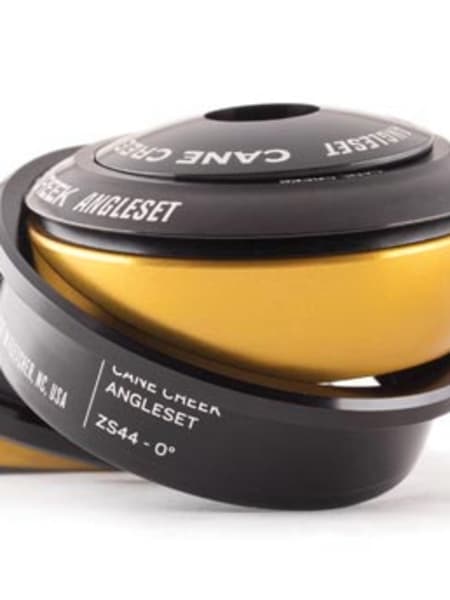Geometry - a collection of numbers which piece together to produce how a bike rides. You can add the most efficient, dialed-in suspension in the world but if the numbers aren’t right, you’re not going anywhere fast.
With so many designers and technicians working for so many bike companies all competing for such a relatively small market segment, it’s no surprise that what goes into producing the ‘perfect’ bike is a hotly contested bone of debate.
One of the big trends over the last few years has been adjustability - in effect, putting the onus into the hands of the rider to adapt their ride to the trail or track more than ever before. Wheelbases, BB heights, head-angles, handlebar reach and even width all seemed fettlable via a myriad of plates, bolts and guess work.
Combine these factors with rear shocks such as Cane Creek’s acclaimed Double Barrel which is externally adjustable across four parameters and you had an incredible amount of input into how your bike could feel. But did we really need or even want it?
For the pro-riders congregating in the pits at the bottom of a World Cup race track, options are always welcome.
But for the keen amateur rider, pulling a bike out of a van on a cold autumnal morning - were you really going to start adjusting your geometry?!
Ok, so some did. But for many, setting the bike into the shape you thought best matched your local trails then leaving it and simply getting used to riding it faster made much more sense.
With the 2011 launch of their then new Scalp and Mega models, Nukeproof Bikes openly renounced adjustable geometry instead urging that potential customers should trust in their designers experience and just get on with enjoying their riding. It was the beginning of a trend which seemed to go on to buck the trend.
Fast forward to today’s world and the top tier DH race models of 2014 from GT, Specialized, Giant, Kona, Morewood and Yeti don’t feature any adjustment whatsoever whilst the ultra-desirable Santa Cruz V-10 ‘only’ offers suspension travel adjustment.
After-market products which allow geometry adjustment still remain popular however. Cane Creek’s Angleset headset allows between 0.5 and 1.5° of headangle adjustment via offset cups and spherical bearings. They’re available in a range of fitments with many frame manufacturers preferring to advertise their product as ‘Angleset ready’ as a token nod to those who want to tinker.
Likewise, Burgtec’s titanium shock hardware effectively shortens or lengthens a shocks eye-to-eye length to cant the front triangle backwards or forwards. It’s a product which has been covertly used by numerous World Cup mechanics over the years to secretly fettle many big brands’ latest geometry.
Indeed, Marc Beaumont took his most recent World Cup victory aboard a Burgtec-shod GT Fury at Val di Sole in 2010.
So the fixation with adjustability was a fad then? Well, no, not really. Some big names are still offering owners some geometry options but the majority have backed off instead leaving it to the suspension manufacturers to further increase the depth and ease of set-up adjustment. Likewise, for those who love their ride but want to chip off a degree here or a millimetre there, there are still options.
Adjustability then has been largely placed back into the hands of those who know what they’re doing as opposed to presenting everyone with a veritable chocolate box of tweaks and Allen bolts not all of which we’re 100% sure we can feel the benefits of.





